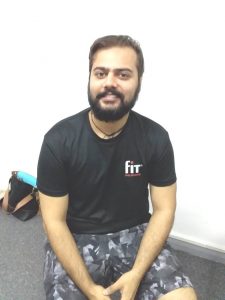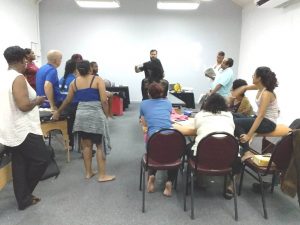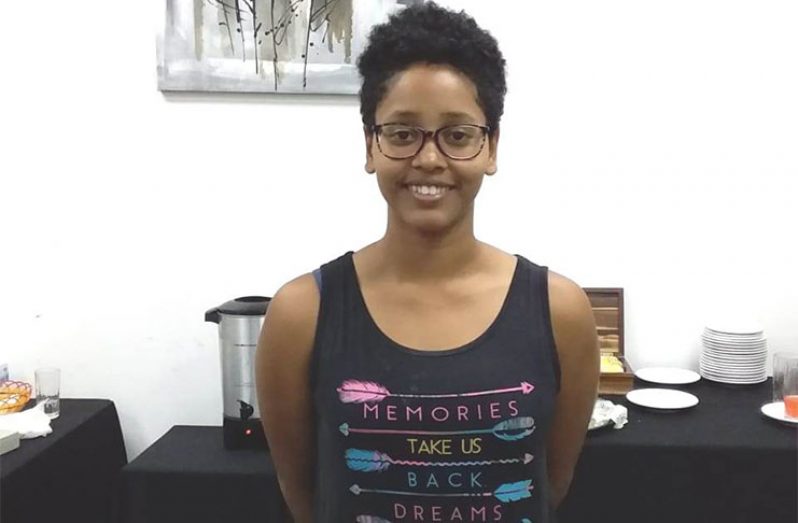Guyana welcomes ‘dry needling’ technique
GUYANA is now being introduced to functional integrated ‘dry needling,’ a technique similar to acupuncture, that is being used in many developed countries to aid in faster relief of various types of pain.
Current pain-relief methods being used by medical practitioners usually see a patient receiving help within 20 to 30 minutes, but with this new method, pain can be relieved within just three seconds to five minutes.
Senior Physiotherapist with the Ministry of Public Health’s Rehabilitation Services Department, Beverly Nelson, explained the technique in an exclusive interview with the Guyana Chronicle, recently.

The government, through the MoPH, arranged for Dr Mihir Somaiya, a physical therapist from India teaching ‘dry needling’ across 28 countries, to come to Guyana and teach the country’s 17 physiotherapists how to apply this technique when treating patients.
The physiotherapists, from health centres all across Guyana, met for the training a few days ago at the Georgetown Club on Camp Street, to complete parts one and two of the exercise. It is difficult to find someone to teach the technique, and further, conducting the training is very expensive. It is for these reasons that the final aspect of the training will be completed sometime next year.
But Nelson is confident that even with the training incomplete, the physiotherapists will be competent enough to begin applying the technique immediately after parts one and two of the training. Upon completion of the entire package, the physiotherapists will receive diplomas.
What is ‘dry needling’?

In an interview with this publication, Dr Somaiya explained that ‘dry needling’ is a new technique that significantly aids in muscular pain relief. Practitioners work on the ‘trigger points,’ he said, for various conditions of muscular, skeleton and sports rehabilitation. The technique is very useful for persons with orthopaedic problems and can even be used in geriatric cases.
During dry needling, a practitioner inserts several filiform needles into the skin. These are fine, short, stainless-steel needles that do not inject fluid into the body. Hence the term dry” needling.
“Many are opting for a non-medicinal approach to pain management of knee pains, spinal problems, etc. This particular treatment works fantastically for spine and knee for the common population. Consumption of medication goes very minimal and the pain can be eased out,” Dr. Somaiya explained.

“It is a method used in the management of pain. It is not the same as acupuncture; the physiology is a bit different. We in ‘rehab’ deal a lot with persons who have pain; back pain, knee pain, and different types of pain. This is an additional skill to help us in the management of the various patients we see,” Mrs. Nelson explained the technique.
She continued: “We used other modalities like heat and ice. We didn’t do any sort of needling as such, so this is new to us. It is something that works faster as well, because you get immediate effects. Within three seconds to five minutes, persons will feel immediate relief of their pain related to injury or arthritis or those types of things. Before, our treatment sessions lasted 20 to 30 minutes, but this can be within seconds.”
According to Mrs Nelson, the diameter of the filiform needle is very small, so that the patient will not feel the usual needle pain. “The most you may feel is just a little jab. You don’t feel anything else after.”
The diameter of the needle is 0.25 millimetres, while the lengths vary from 25 ml, 40 ml, 60 ml, 75 ml and 100 ml. The type of needle used will be determined by the depth of the muscle that has to be penetrated.
A good alternative
Soroya Simmons is one of the physiotherapists who benefitted recently from the training. She is based at the Ptolemy Reid Rehabilitation Centre and said she plans on using the new technique on herself and patients.
“I tried it on myself. I was feeling some pain on my hand and I was immediately relieved. So it’s definitely something I plan on using more both for myself and my patients,” she told the Pepperpot Magazine.
“So if you’re a person that doesn’t like taking medicine or taking injections, or don’t like foreign things in your body, I think this is a good alternative. It’s a very specialised skill. I know we had a lot of Chinese doctors that are here for acupuncture, but this is very different.”

Simmons called attention to how costly it is to get someone to come to Guyana and teach the technique, and said she was therefore happy to benefit from it. The ministry paid about $6M to get parts one and two of the training completed. “If this is the start, I feel we have good opportunities for other courses to come on board and help us expand our education,” she expressed.
Meanwhile, Nelson noted that the technique is being practised a lot in the United States, Australia, Jamaica, The Bahamas, and other countries.
“After the training once we get the resources, including the needles, the physiotherapists will go back to their communities to begin practising. In fact, Dr. Somaiya brought some needles with him.”
Dr Somaiya feels that local practitioners need more exposure to the latest research that is available. “The skills over here, I’ll tell you frankly, are quite old. More and more exposure is needed for the therapists and new research is required by the population over here, new techniques, because the world right now is far ahead.”
He has developed and presented the courses on pain management using dry needles in many countries for medical and physical therapy practitioners through his institute located in the United Kingdom called Functional Integrated Dry Needling (FIDN LTD).




.png)









